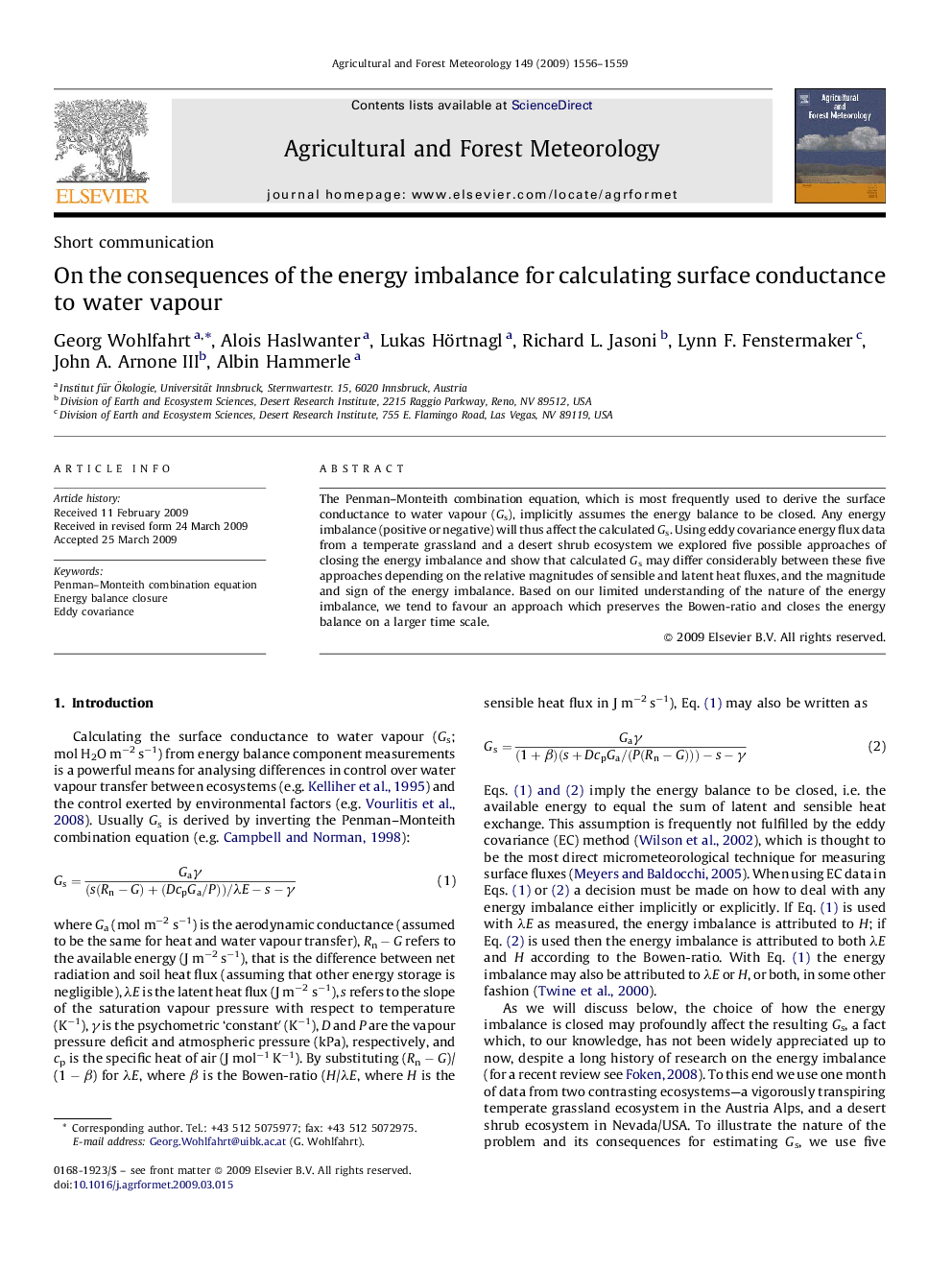| Article ID | Journal | Published Year | Pages | File Type |
|---|---|---|---|---|
| 82339 | Agricultural and Forest Meteorology | 2009 | 4 Pages |
The Penman–Monteith combination equation, which is most frequently used to derive the surface conductance to water vapour (Gs), implicitly assumes the energy balance to be closed. Any energy imbalance (positive or negative) will thus affect the calculated Gs. Using eddy covariance energy flux data from a temperate grassland and a desert shrub ecosystem we explored five possible approaches of closing the energy imbalance and show that calculated Gs may differ considerably between these five approaches depending on the relative magnitudes of sensible and latent heat fluxes, and the magnitude and sign of the energy imbalance. Based on our limited understanding of the nature of the energy imbalance, we tend to favour an approach which preserves the Bowen-ratio and closes the energy balance on a larger time scale.
